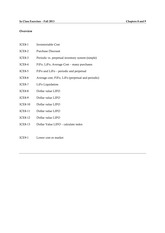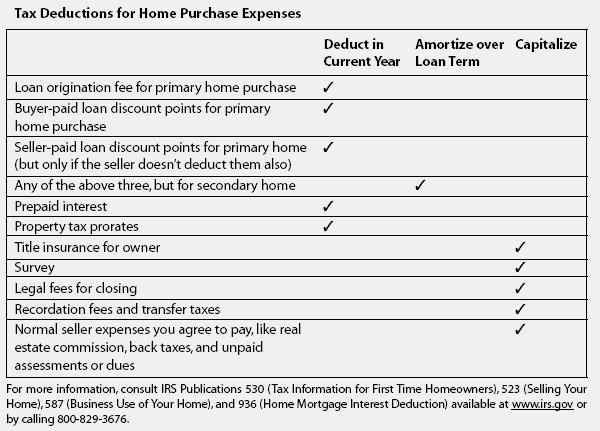
We’ll examine only a few of their self-proclaimed best sellers in this case study. Maybe you sold 50 units of Product A and 75 units of Product B. Product A costs $299 and Product B costs $199. With Square Online, you can turn any business into an online business with a free eCommerce website.
If a company does not record sales allowances, sales returns, and sales discounts, their net sales value, and gross sales value will be the same. Gross sales isn’t a particularly accurate metric when considering the health of a business or its sales processes. If you only consider gross sales — separate from the rest of an income statement — you might see a considerable overstatement of a company’s sales figures.
- Determine how much more revenue your company needs to hit sales targets, and set realistic quotas for reps based on those metrics.
- Set up a free online store that syncs with your inventory and your social media.
- Arm your business with the tools you need to boost your income with our interactive profit margin calculator and guide.
- This is because the message it conveys is simple and straightforward and it is a useful barometer for how the business is performing in its market over time.
- To calculate the store’s net sales, we remove these three sets of deductions from the $5,000 total sales revenue.
- These include the direct costs of goods sold (costs that are directly allocable to particular units or product lines) as well as other variable expenses and fixed costs (overhead).
Understanding the difference between gross sales and net sales is crucial for assessing a company’s financial health and performance accurately. Both metrics offer valuable insights into a company’s revenue generation process and can help business owners and stakeholders make informed decisions. By analyzing both gross sales and net sales data, companies can optimise their strategies to drive growth and profitability.
Revenue during a specific period
Net sales allowances are usually different than write-offs which may also be referred to as allowances. A write-off is an expense debit that correspondingly lowers an asset inventory value. Companies adjust for write-offs or write-downs on inventory due to losses or damages.

This could mean that your product needs redesigning, or that your sales process is targeting the wrong people. In this case, you’ll need to review your ideal customer profile to make sure you’re reaching out to the right people. Net sales show you how many customers are using your early-payment discount. If these discounts are increasing, it means more of your customers are paying their bills promptly.
How to Calculate Gross Sales (Step-by-Step)
These three deductions have a natural debit balance whereas the gross sales account has a natural credit balance. The income statement is the financial report that is primarily used when analyzing a company’s revenues, revenue growth, and operational expenses. The income statement is broken out into three parts which support analysis of direct costs, indirect costs, and capital costs. The direct costs portion of the income statement is where net sales can be found. Tracking your gross sales provides a way to measure the total amount of revenue made by sales teams.
The gross sales formula is calculated by totaling all sale invoices or related revenue transactions. However, gross sales do not include the operating expenses, tax expenses, or other charges—all of these are deducted to calculate net sales. And, of course, you can only calculate the net sales of a business by using gross sales. A business might start by declaring its gross sales (commonly referred to as gross profit or total gross revenue), then listing the different sales deductions made as line items (which are the net sales). Other companies skip the part of identifying the gross sales and deductions and simply list the net income or net revenue.
Can Its Growth Efforts Aid Colgate (CL) Amid Cost Woes? – Nasdaq
Can Its Growth Efforts Aid Colgate (CL) Amid Cost Woes?.
Posted: Mon, 21 Aug 2023 14:02:00 GMT [source]
That isn’t to say that having sales is a poor choice or something to be avoided. Businesses have to find a balance between offering sales and low prices to draw customers and being sure to make a profit. Unless you offer tremendously specified goods or services, it’s always a balancing act. Your gross sales also give you a good idea of how many customers you’re getting in the door, so to speak, and how many of them are purchasing items once they’re there. Knowing the amount of your gross sales is important in order to see the health of your business. Being able to see the difference between your gross sales, net sales, and profits allows you to determine where you need improvement.
Allowances
Calculating net sales helps you to determine how much of your gross sales revenue is lost to returns, discounts and allowances. By measuring the ratio of gross to net income against your competitors, you can see how much potential revenue is lost to these costs. Analysts often find it helpful to plot gross sales lines and net sales lines together on a graph to determine how each value is trending over a period of time.
Gross sales, however, gives you a clear picture of how your business is performing overall and how many sales transactions are actually taking place. However, upon looking at net revenue, investors realize that the number of product returns also skyrocketed because people felt pressured to buy products they didn’t really want. If your net sales are substantially lower than your gross sales, there are steps you can take to improve net sales. Being less generous with your discounts, upselling, and finding other methods of building value for the customer before you offer a discount or allowance. These can still incentivize sales without the need to discount the cost of your goods.
Difference between gross revenue and net revenue
Your gross profit ratio measures the profitability of your specific product lines, answering the question of whether certain products are profitable to make and sell. This figure does not take into account any costs you incurred to produce the sales that generated that revenue. Gross sales vs net sales As a sales manager, you can create a plan around working with other teams to address customer concerns and discuss ways to add value to increase profits. Gross sales and net sales are two common metrics that offer distinct advantages when it comes to gauging revenue.
If you’re not sure what they are and how they differ from each other, you’re not alone. Discover the latest small business stats, including demographics, sales and marketing methods, financing and revenue figures and the biggest challenges. Analyzing gross and net sales helps guide your decision-making process. It gives you real insight into your sales performance, which helps you make informed and strategic decisions.
If a company provides full disclosure of its gross sales vs. net sales it can be a point of interest for external analysis. If your gross sales are high but net sales indicate that one of your products is being returned more than usual, you can use this information to identify what’s wrong. Then, you can make changes to provide a better product or service to your customers.
Frequently asked questions about net sales
This insights and his love for researching SaaS products enables him to provide in-depth, fact-based software reviews to enable software buyers make better decisions. For example, if a buyer purchases your stocks on credit and manages to pay within the first 10 days of invoice issuance. He or she might be offered a percentage discount based on the former agreement between both parties. ACTouch Cloud ERP helps to manage the Balance sheet, P&L reports automatically based on the transactions generated by Customers. Let’s say a customer purchases a product for $100 and returns it, resulting in a $10 allowance. If you use Accounting software, you will find Gross Sales and Net Sales figures in your Profit and Loss reports.

Although some people may use the terms interchangeably, they are actually two separate and distinct measures of income. There should be no discounts, allowances, or returns included in this figure. The purpose is to get a sense of the overall revenue of your business within a selected period of time. Net sales is the amount left after deducting all discounts, allowances, and returns.
Understanding the gross sales formula
Although this representation takes a lot of space, it also outrightly explains the quality of your transactions. So if a company wants to put them into separate columns, the accounting officer must understand how each transaction went so he or she can put it into the appropriate lines. Discounts are given on sales either based on early payments, bulk purchases, or a good buyer-seller relationship. Set realistic sales goals for your retail business based on these numbers. Setting goals can inspire your team to work aggressively to achieve them, maximizing business growth. Next, we need to determine the number of products sold by their original sale price.
To avoid getting overwhelmed, use a sales CRM like Zendesk Sell to keep tabs on all the important metrics. Zendesk automates the measurement of sales metrics so you can focus on keeping your top and bottom lines strong. But they’re not the only sales metrics you should analyze and monitor regularly. Read on to learn what distinguishes these metrics and how you can use both of them to understand and increase your revenue. Here, we’ve outlined some of the common causes that can increase the distance between gross and net sales, as well as some advice for how to get your sales back on track.
Therefore, your net sales take into account returns, discounts, and allowances. Your net sales, then, are much closer to the actual amount of money you made. Net sales is the best, most accurate reflection of the efficacy of a company’s sales operations.
Gross and Net sales are two of the most common metrics used to track the performance of a business. In this article, we’ll show you the difference between gross and net sales along with how you can calculate them. In contrast, net revenue reveals how much of your gross revenue remains after accounting returns, refunds, and discounts.
